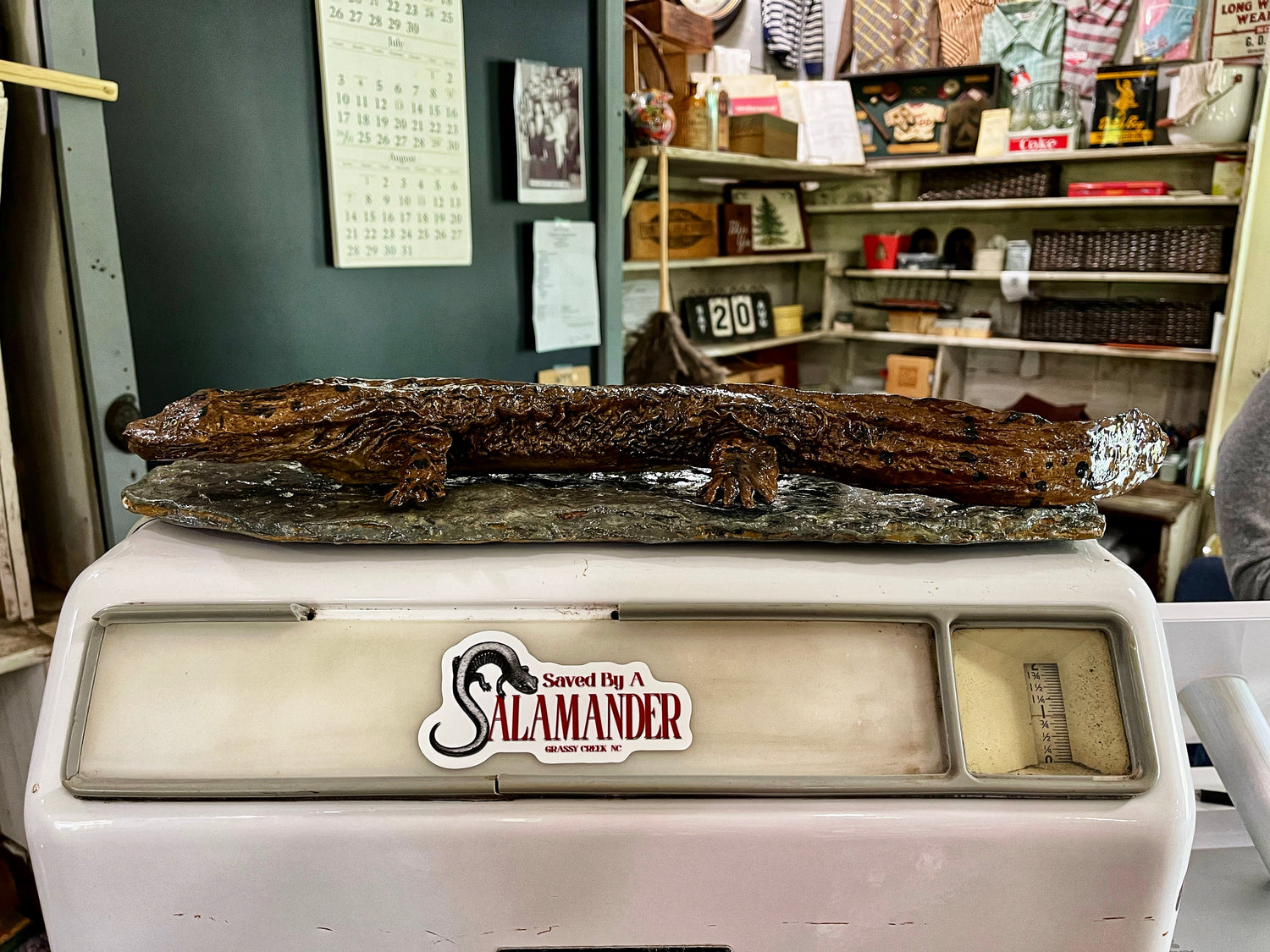Meet the Hellbender
Scientific name, Cryptobranchus alleghaniensis. Sometimes called the “snot otter,” “lasagna lizard,” “devil-dogs,” and many other imaginative nick-names, the hellbender is one of the most secretive residents of the Appalachian area. They are the largest amphibians in the country, reaching 29in in length. They can be found thinly scattered across the Appalachian Mountain Range, but are only well established in pristine areas.
Hellbenders are a mottled brown and grey, with black spots across the body. Their skin is loose and wrinkly. They have four stubby legs and an eel- like tail. Their heads are round and flat, with vanishingly small eyes. In general, they look almost exactly like the stream beds in which they spend most of their lives. They use this remarkable camouflage to stealthily hunt along the river bed, seeking out any living animal small enough to eat. Notably, this does not include humans. Despite their name, hellbenders are harmless to us.
Biology
Nobody would claim that the hellbender is the most photogenic animal alive
today. In fact, when confronted with a living specimen, the first word that springs to mind is usually “ugly.” But what they lack in conventional good looks, they more than make up for in their incredible biology. For instance, despite their aquatic nature, hellbenders have lungs! They use them for buoyancy when swimming. The question that follows, of course, is then “where do they get oxygen from?” Astonishingly, the answer is “their skin!” Hellbenders breathe through their skin, just like many other salamanders do. But because they’re so big, they need more oxygen than other salamanders, which is why their skin is so wrinkly. The wrinkles add extra area for oxygen to be exchanged.
Another one of the hellbender’s incredible talents is its vision. While its true eyes are weak and nearly useless, the hellbender has photoreceptors all over its body, which allow it to use every inch of its body as an “eye”. As a creature that relies on camouflage and stealth to survive, this is an indispensable trait that allows them to immediately sense if any of their body is exposed to sunlight. Despite these incredible adaptations, however, the Hellbender is in a lot of trouble today.
An Appalachian Icon in Danger
Hellbenders are disappearing at faster and faster rates every year. The figure across shows the historic range of the hellbender - nearly 80% of that territory is now uninhabitable to them. While physically sturdy, these secretive giants are extremely susceptible to chemical contaminants. They rely on pure, cold water rich in oxygen to survive. When we, as humans, alter their environment, the hellbenders are often the first to disappear. In fact, the presence of hellbenders is a fantastic way for biologists to assess the overall health of a river.
What can we do to help? We can monitor our waterways and do our best to keep them clean and intact. Don’t alter the natural river bed or move rocks. And to get involved directly, contact an organization near you like The New River Conservancy!
Hellbenders and Grassy Creek
If you talk to the people of Grassy Creek, you might hear stories about the hellbender. Some people might even tell you that the hellbender “saved Grassy Creek.” The truth of the matter is a little more complicated, but there may be a grain of truth in the saying. The story begins in 1962, and features the New River as its main character.
The New River, despite its name, is one of the oldest rivers on Planet Earth. It is unusual in that it flows from South to North, starting in North Carolina and terminating in West Virginia. Thanks to its unusual features, many unique lifeforms thrive in and around the river, with an equally rich range of people to match. In 1962, the Appalachian Power Company announced its intention to build a new hydro-electric dam on the New River. This dam would have flooded Grassy Creek and many other communities. The announcement was met with criticism from the beginning- many of the people whose land would flood had roots here stretching back to the 1700s. Furthermore, the power generated by the dam was meant to be piped out of state. Nobody in North Carolina would
have benefited from the power. Proponents of Grassy Creek banded together to fight against the destruction of their ancestral home, but the battle was long and hard. Years passed without much headway being made by either side. Eventually, a National Wild and Scenic River System was created by Congress in 1968. Many things, including ecological and historical importance, must be present in order for a river to qualify as a Wild and Scenic River. By 1976, the New River had earned a place on that distinguished list, and became protected from development by the Appalachian Power Company.
So, did the hellbender “save Grassy Creek?” It was certainly relevent to Congress’ deliberations over the New River’s status. Thankfully, we’ll never know if the hellbender was the deciding factor. What is certain, though, is that the hellbender is an incredible symbol of the ancient history of these hills, and of the heritage we share with both the land and each other.
Researched and written by James Watson

Replica of a Hellbender
We have a replica of a Hellbender on proud display in our store next to our one-of-a-kind Saved by a Salamander sticker.
Get a PDF copy of the pamphlet What the Heck is a Hellbender by James Watson by clicking the button below.
